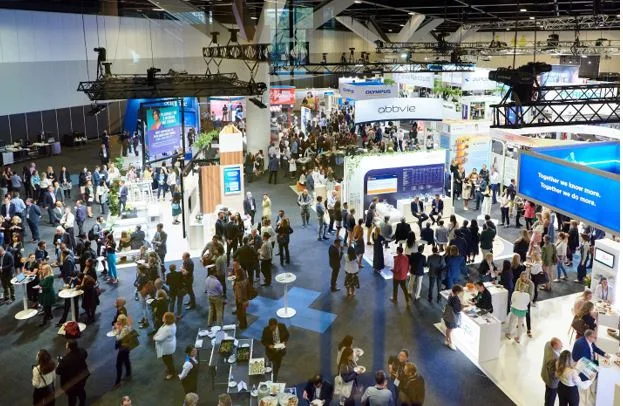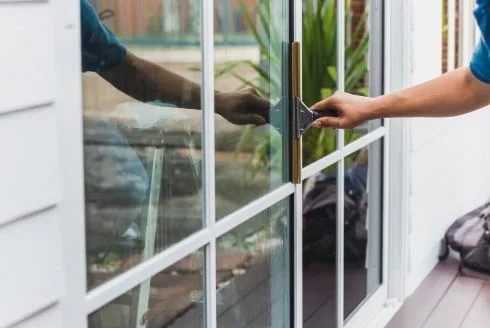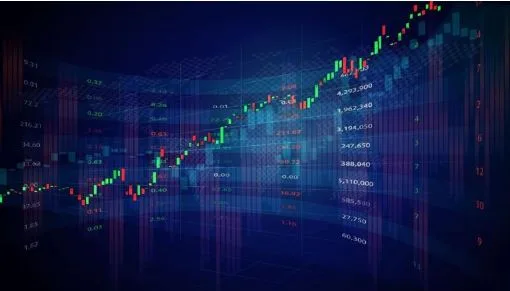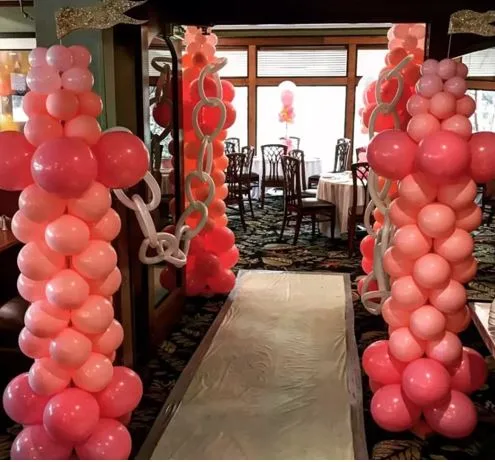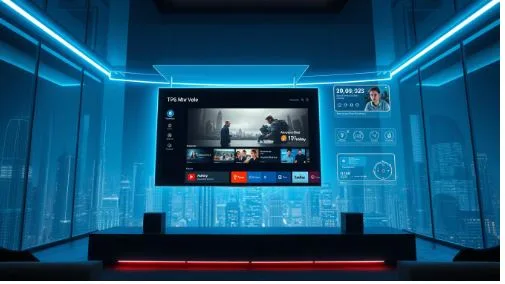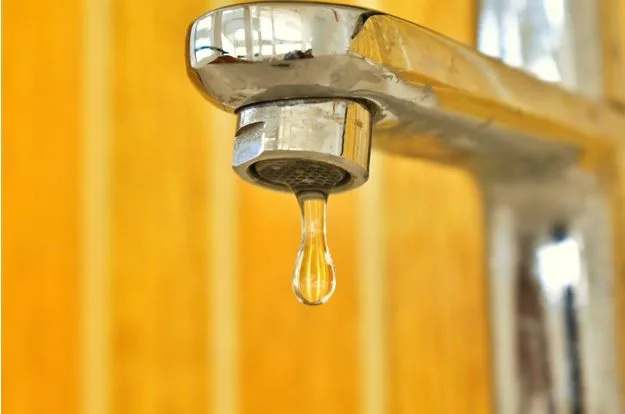Custom Booth Experiences in US: A Guide for European Startups
From Europe to America: How Global Startups Can Break into the U.S. Market with Smarter Brand Visibility
The American market remains the biggest prize and the most challenging stage. So how can startups from Europe make a difference with their Trade Show booth customized experiences in US trade shows? For European startups, coming to the U.S. can seem like the ultimate validation of their vision. That’s more than just new customers — that’s global credibility and investor appeal. But the U.S. Trade Show market is very crowded, and how buyers assess brands is often faster, harsher and more visibility-driven. The fate of your name becoming a topic of conversation — or forgotten amid the noise — can be decided by a single trade show appearance.
This article takes a closer look at the ‘how’ start-ups can leverage custom booth experiences in US trade shows to speed up their visibility. It touches on cultural differences, best strategies for booth design, integration of marketing programs, budgeting, brief case examples, and what not to do. Call it a useful playbook for any European squad wishing to cross the Atlantic and leave a mark.
Why the U.S. Exhibition Market Demands a Different Strategy
What plays in Paris or Berlin does not necessarily translate in New York, San Francisco or Las Vegas. The ecosystem of American trade shows is enormous. Certain events, like CES in Las Vegas or BIO International in Boston, bring 10s of thousands of attendees alongside thousands of exhibitors. In this atmosphere, buyers and financiers enter the hall already bracing for dozens of pitches. Sure, that means attention spans are short, but expectations for polish are high.
Trade show culture in Europe tends to be more relaxed and more conducive to quieter conversations, and low-key branding can be very effective. It tends to be clarity and impact in the U.S.” A message has to hit in seconds. Graphics should be strong and visible from a distance, but also be combined with a tangible message. Startup teams need to understand that American prospects aren’t disrespectful — they’re busy. It also takes a kind of precision, courage and gamesmanship to win their attention.
Another important difference has to do with cultural norms. Heritage, process or design philosophy tends to be the focus in many European startups. Crowds in the United States value results and evidence, though. They need case studies, ROI figures, and real benefits. This change implies that when you are thinking about visibility in the U.S., your narrative will shift from ‘how we work’ to ‘what we deliver’.
Custom Booth Experiences in US Trade Shows
“Personalization is table stakes now, and those who get in on it early win faster.”
Ten years ago, many of the exhibitors were utilizing basic rental designs with few modifications. That era has passed. Today’s attendees demand nothing less than an all-encompassing experience that feels like a direct extension of the brand. Nowhere is that more the case than in the U.S., where marketing is experiential and interactive by nature. If you rely on a static station, complete with brochure holder, your station will be passed by.
Tailored booth experiences in U.S. events give startups the chance to stand out without breaking the bank. You can also include unique layouts, interactive areas and personalized storytelling. For example, an IoT startup may construct a miniature connected home that allows visitors to experiment with their technology in situ. A health-tech company could build an interactive wall that lets visitors walk through patient journeys. These experiences are not only entertaining — they also educate and persuade.
Moreover, personalization signals confidence. When they see you’ve created a place for them, it shows seriousness. It says to them you didn’t just wander by — you came prepared for that market. In the crowded U.S. field, that can mean a lot.
European Startups Can Leverage Trade Shows to Bridge the Gap
Exhibitions are more than just marketing—they are cultural translators between continents.
When it comes to breaking into the U.S., it’s not just a matter of shipping your product across the Atlantic. It’s your story, and how you make it relatable to American buyers, partners and investors. Trade shows are a cultural translator, allowing you to position your offering in a manner that resonates with people in a different place. Designing a booth that captures your brand identity while also meeting U.S. standards for professionalism and engagement is another reason to go custom.
When startups bring themselves to the U.S. floor with tailored experiences, they are not only highlighting their own innovation, they are showing respect for the market. It says: We know how you think about brands, and we have spent a lot of money to meet you on your terms. That alone engenders more credibility than cold outreach or digital ads would in months.
The latter could include changing the names of products, using U.S. spellings or displaying messages from American customers. No detail is left unturned—everything is to show that your startup should be on this stage not as a spectator, but as a player.
Anatomy of a Custom Booth Experience That Works in the U.S.
What makes a Trade Show booth not only visually appealing, but effective?
There’s a blueprint to successful custom booth construction and it begins with clarity. At first glance, visitors should be able to see who you are, what you do and why it’s important. It should be 10 words or less, bold and focused on what we’re learning from the result. Support visuals should strengthen the message not water it down.
Next is interactivity. This could be anything from touchscreen demonstrations to live product testing. For instance, a fintech start-up might allow attendees to role-play transactions in a mock-up app, while a robotics company could run live demo machines. Sensory matters — lights, sounds, textures pull people in; and your layout needs to direct traffic: open corners for entrance, demostations to demo, seating to sit and have serious discussions finally.
Including cultural components can also help set your brand apart even more. Perhaps most importantly, hold onto those European design sensibilities: Minimalism, sustainability or some simple artistic flair can set you apart on the U.S. floor. The key is to seamlessly blend style and substance so that guests come out impressed as well as informed.
Smarter Brand Visibility Beyond the Booth
Treat visibility like a campaign, not a one-day build.
Too many startups show up to a trade show and hope the booth does all the work. In reality, shows run on a three-act plan: before, during, and after. Before the event, line up meetings with target accounts, announce your presence on LinkedIn, and run geo-targeted ads so the right people know where to find you. During the show, make sure your team is proactive on the aisle, your micro-events happen on schedule, and your social feeds stay lively with quick clips and photos. After the show, move fast—send thank-you emails, publish a recap, and nurture the hottest conversations into real opportunities.
Think of the booth as the stage and the rest of your marketing as the sound system. Without coordinated pre- and post-show activity, the impact fades when the lights go down. With it, your presence echoes for weeks.
This integrated approach also clarifies ROI. When the booth ties directly into your digital campaigns and sales motion, you can follow the journey from a badge scan to a signed contract months later—and justify doing it again.
Why Custom Booths Pay Off for Startups
The right visibility turns into pipeline and partnerships.
Budgeting is often the hardest part, but a smart custom booth in a U.S. show isn’t just a cost—it’s an investment. A well-designed presence can spark press coverage, attract high-intent buyers, and open partnership doors you won’t unlock with ads alone. Measure success by cost per qualified conversation, not just cost per square foot.
Plan for the real line items: floor space (to the organizer), booth design and build (including graphics and shipping), on-site services (electric, internet, drayage), travel, and marketing. The payoff comes when 20–30 real conversations turn into long-term U.S. customers or investors. Aim for credibility over spectacle—and don’t starve the budget that proves you belong.
Remember the “gotchas”: union labor, storage, and rush fees can bite. A seasoned U.S. booth partner helps you spot and control these before they hit the invoice.
How Global Startups Gained Booth Experiences in US Traction
Real examples of presence turning into progress.
A Berlin SaaS team launched at CES with a custom booth showcasing live dashboards on large displays. The visual proof turned heads, earned press, and landed a pilot within weeks. A French hardware startup at a New York tech expo built an interactive area so visitors could handle prototypes; foot traffic snowballed into distributor deals that had been out of reach for a year.
A London health-tech company at BIO International mapped its experience around a simulated patient journey. The walk-through didn’t just inform; it built empathy. That emotional clarity led to meetings with hospital groups and investors.
The pattern is consistent: storytelling through space. Done well, custom booth experiences in the U.S. don’t sit in the “branding” bucket—they drive sales conversations, earn media moments, and accelerate trust.
Pitfalls to Avoid When Entering the U.S. via Trade Shows
Don’t let cultural misses or weak execution dull your debut.
Mistake one: assuming the U.S. Trade show floor feels like Europe. American shows move faster and reward bold, simple messaging. Mistake two: spending on design but skimping on staff training and follow-up. Your team must qualify quickly and lock next steps before the prospect walks away.
Local nuance matters, too. Units, pricing formats, and even humor can create connection—or confusion. Localize not just your graphics but also your pitch and post-show cadence.
Finally, capture every conversation cleanly. In the U.S., fast follow-up is expected. Without a lead system and next-step owner, warm interest cools quickly.
Picking the Right U.S. Booth Partner for Custom Experiences
Your vendor should act like a strategist, not just a builder.
Look for a partner who understands startup realities: tight budgets, quick pivots, and the need for flexibility. Ask about experience with European exhibitors and whether they manage logistics like drayage, union labor, and on-site services. Review portfolios, check references, and compare detailed quotes—not just totals.
A trustworthy exhibit partner in U.S. will steer you away from unnecessary spend, propose creative build options, and align the booth with your specific outcomes. Think of them as an extension of your marketing and sales team. The best partners also provide cultural guidance—what resonates with U.S. attendees, what local rules apply, and which design choices convert on that floor.
Final Word
Visibility is the currency of the U.S. Trade Show market—go earn it.
Crossing into the U.S. isn’t only about geography; it’s about closing a visibility gap. The companies that win show up clearly and confidently. Digital alone rarely gets you there. A strong, well-run presence on the trade show floor is still one of the fastest ways to build trust.
Investing in custom booth experiences in the U.S. puts your story on a stage that buyers, partners, and press actually notice. Don’t just attend—stand out. When done right, your booth doesn’t blend into the hall; it becomes the launchpad for your U.S. debut.

